A 360-degree car camera system offers drivers a comprehensive view of their surroundings by stitching together images from multiple cameras positioned around the vehicle. This technology, often referred to as a “birds-eye view” or “surround view,” allows you to see the entire perimeter of your car on a single screen. By effectively eliminating blind spots, these systems revolutionize parking, navigating tight spaces, and overall vehicle safety.
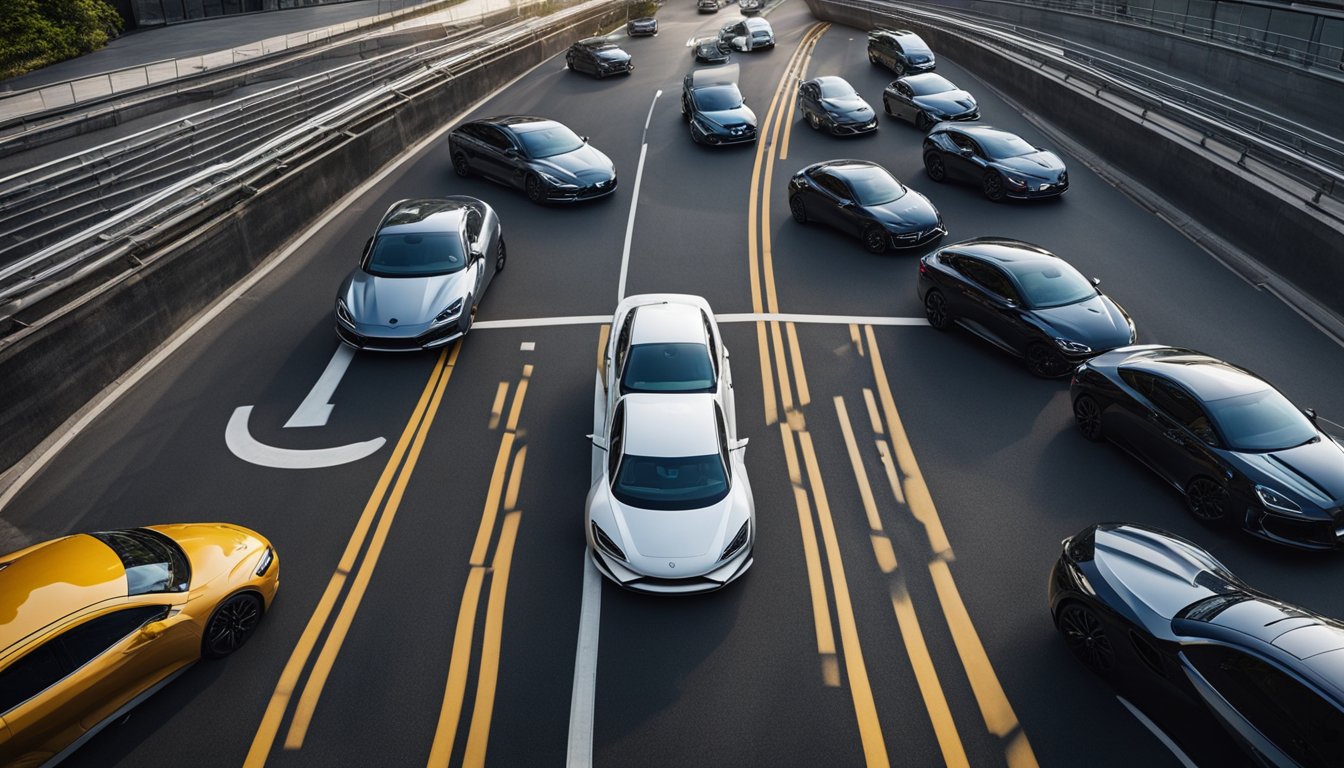
At the heart of this system are several strategically placed cameras—commonly located at the front grille, beneath the side mirrors, and at the rear of the car. Together, they feed live footage to an on-board processing unit that combines the perspectives into one seamless panoramic image. This advanced tech not only assists while you park but also bolsters safety features, such as pedestrian detection and cross-traffic alerts. With the growth in autonomous driving technology, the role of 360-degree cameras is becoming ever more central to modern automotive design.
Key Takeaways
- A 360-degree car camera system provides a comprehensive panorama that helps in eliminating blind spots.
- The system integrates multiple cameras and an on-board processor to display a seamless birds-eye view.
- These cameras improve vehicle safety and are integral to the evolution of autonomous driving technology.
Evolution of Car Camera Technology
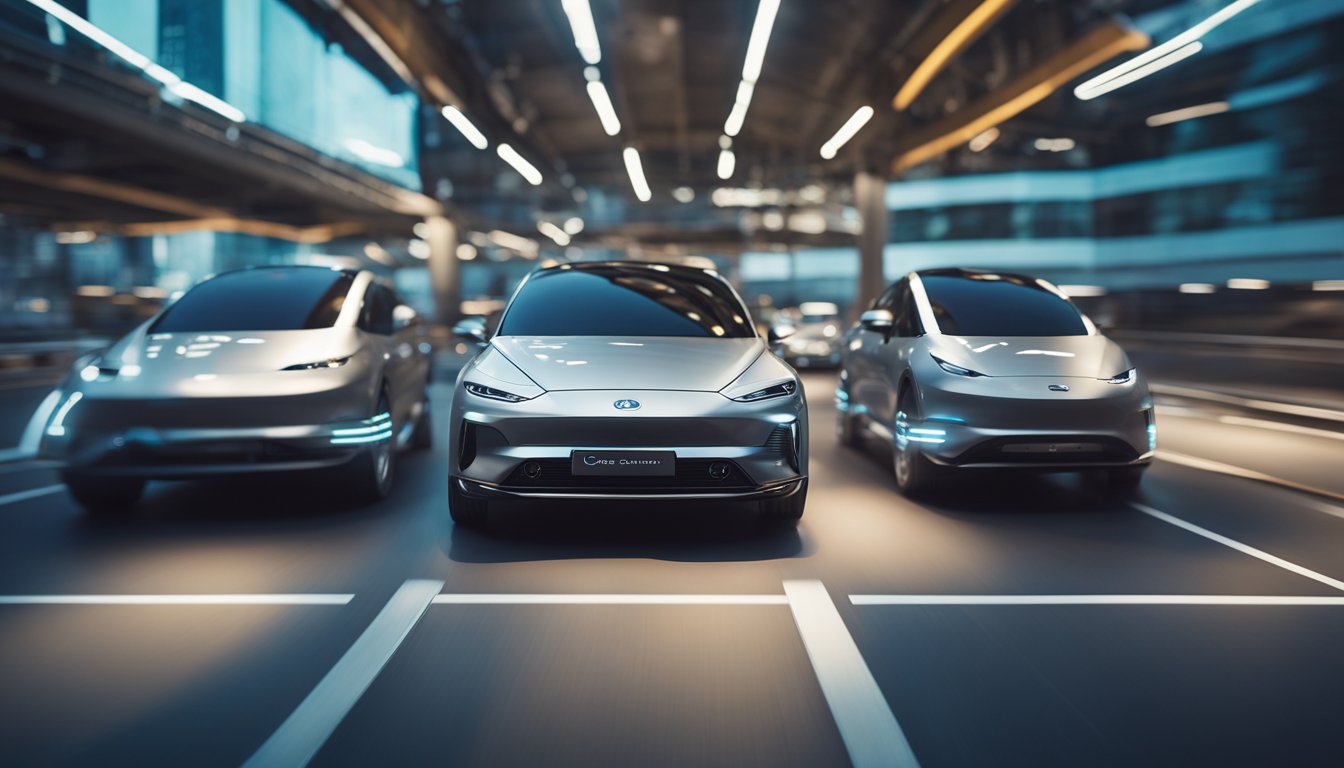
As you reflect on the advancements in automotive technology, it’s fascinating to see how integral car cameras have become to your driving experience. Initially, cameras in cars were a novelty or high-end feature, but over time they evolved into important safety tech.
The Beginning: The journey started with simple reverse cameras. These cameras became popular once the auto industry recognized their potential to enhance safety by reducing blind spots.
- 2008: The seed was planted when some automakers began offering reverse cameras as an optional luxury feature.
- 2014: More vehicles started to incorporate these cameras, as customer demand for safety features increased.
- 2018: By now, reverse cameras were no longer an option but an industry standard, mandated for all new vehicles in the United States.
With safety at the forefront, the evolution didn’t stop there. The development of the 360-degree camera system marked a significant leap.
- Complexity: It involves multiple cameras – usually one on every side of the vehicle.
- Software Integration: Sophisticated software stitches together these images, giving you a bird’s-eye view of your surroundings.
Automakers continuously enhance this technology to not only help you park but also to navigate complex environments and anticipate hazards. The 360-degree view is particularly useful in urban settings, where pedestrians and cyclists may enter your path unexpectedly.

Today, with a touch of a button, you can see an all-encompassing, seamless view around your vehicle, making your journey safer and giving you peace of mind. This snapshot of technology around your car is just an example of how the relentless pursuit of safety and convenience shapes the vehicles you drive.
Understanding the 360-Degree Camera System
When you’re behind the wheel of a modern vehicle equipped with a 360-degree camera system, you have a high-tech guardian angel. This system gives you a bird’s-eye view of your car, making maneuvers like parking feel like a breeze.
Here’s how it works:
- Multiple Cameras: Your car hosts a team of cameras placed strategically at the front, rear, sides, and sometimes even under the mirrors. These cameras capture the surroundings from different angles.
- Image Stitching: The image processing software inside your car’s computer takes these separate images and stitches them together. It’s almost like putting together a panoramic photo on your smartphone.
What you get on your display is a real-time view of your car’s environment, which can make you feel like you have x-ray vision. No, it’s not magic—it’s the wonders of technology!
The software makes sure there’s minimal distortion and that each seamless panoramic image is presented in a way that’s intuitive to you. It allows for safer and more efficient navigation through tight spaces, giving you more confidence while you drive.
Components of a 360 Car Camera System
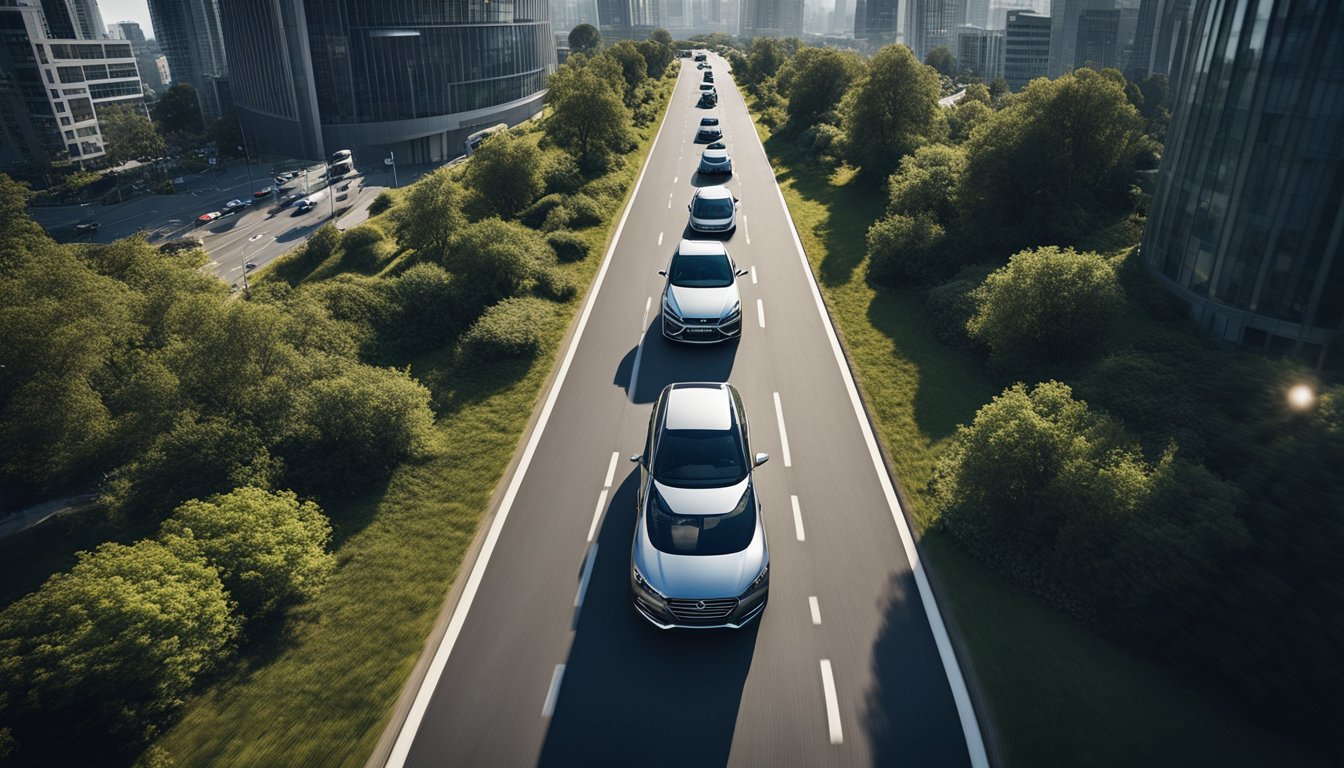
A comprehensive 360 car camera system is a fusion of multiple cameras and sensors that work together seamlessly. Your awareness of your vehicle’s surroundings is enhanced through strategic placement and advanced technology.
Cameras and Placement
« Best 360 Camera App Reviews: Unveiling Top Picks for Epic Panoramas
How to Add a 360 Camera to a Car: Simple Installation Guide »
Each camera of the 360-degree system is positioned strategically around your vehicle: one in the front grill, one on each side mirror, and one near the rear license plate. These cameras capture every angle around your car, and software stitches the views together into one seamless image on your infotainment screen. This process may require occasional camera calibration to maintain accuracy.
Sensors and Proximity Alerts
Beyond cameras, your system includes various sensors that provide proximity alerts. Sensors are typically located around the car’s perimeter, and they feed information to the system when you’re close to an object, giving acoustic or visual signals for better maneuvering. These proximity sensors are especially useful in tight parking spaces or when navigating through challenging environments.
Infotainment Integration
The heart of the system’s interface is the Human Machine Interface (HMI), often your car’s infotainment screen. It displays the stitched images from the cameras as well as information from the sensors. This integration allows for a user-friendly experience, giving you access to the system’s features through touch or voice commands, enhancing both safety and convenience.
Parking Assistance and Safety Features
When parking your car, added technology enhances safety and eases the process. Integrated systems use cameras and sensors to guide you into tight spots without the guesswork, protecting you and your vehicle from unexpected curbs and obstacles.
Parking Sensors
Your vehicle’s parking sensors are like an extra set of eyes, especially where your vision might be limited. They detect proximity to objects, alerting you with audible beeps that increase in frequency as you get closer. This reduces the risk of bumper scrapes or hitting unseen hazards.
Blind Spot Detection
The blind spot detection feature is your go-to for safe lane changes and maneuvering in dense parking lots. It alerts you to unseen cars in adjacent lanes or when reversing, minimizing the chance of side-swiping another vehicle or a passing bicyclist.
Backup Cameras
Backup cameras provide you with a live feed of what’s behind your car. This real-time video helps you back up safely, showing a clear view of what is normally out of sight, and making it simple to navigate around toys, bikes, or high curbs when you reverse.
Viewing Angles and Camera Perspectives
When you look at your car’s surroundings through a 360-degree camera system, you’re experiencing the benefits of multiple viewing angles. These perspectives, from top-down to side views, are crucial in providing a complete picture that assists in navigation and parking.
Top View
The top view is a crucial component of the 360-degree camera system in your vehicle. It merges images from multiple cameras, strategically positioned around your car, to create a composite image. This top-down perspective helps you see the position of your car relative to the surrounding objects, giving you a better understanding of how much space you have to maneuver.
Bird’s Eye View
The bird’s eye view is similar to the top view but provides a slightly different perspective. It’s as if you’re looking down at your car from above, but at an angle, allowing you to perceive more depth. This view is extremely helpful in tight parking scenarios where judging the distance between your car and obstacles is critical.
Panoramic View
Lastly, the panoramic view gives you a broad, near-seamless perspective that wraps around your car. This angle is wider than your natural field of vision, covering not just the sides but also the front and rear. It’s like having a virtual mirror that eliminates blind spots, ensuring you have comprehensive visibility around your vehicle.
Display and Interface Options
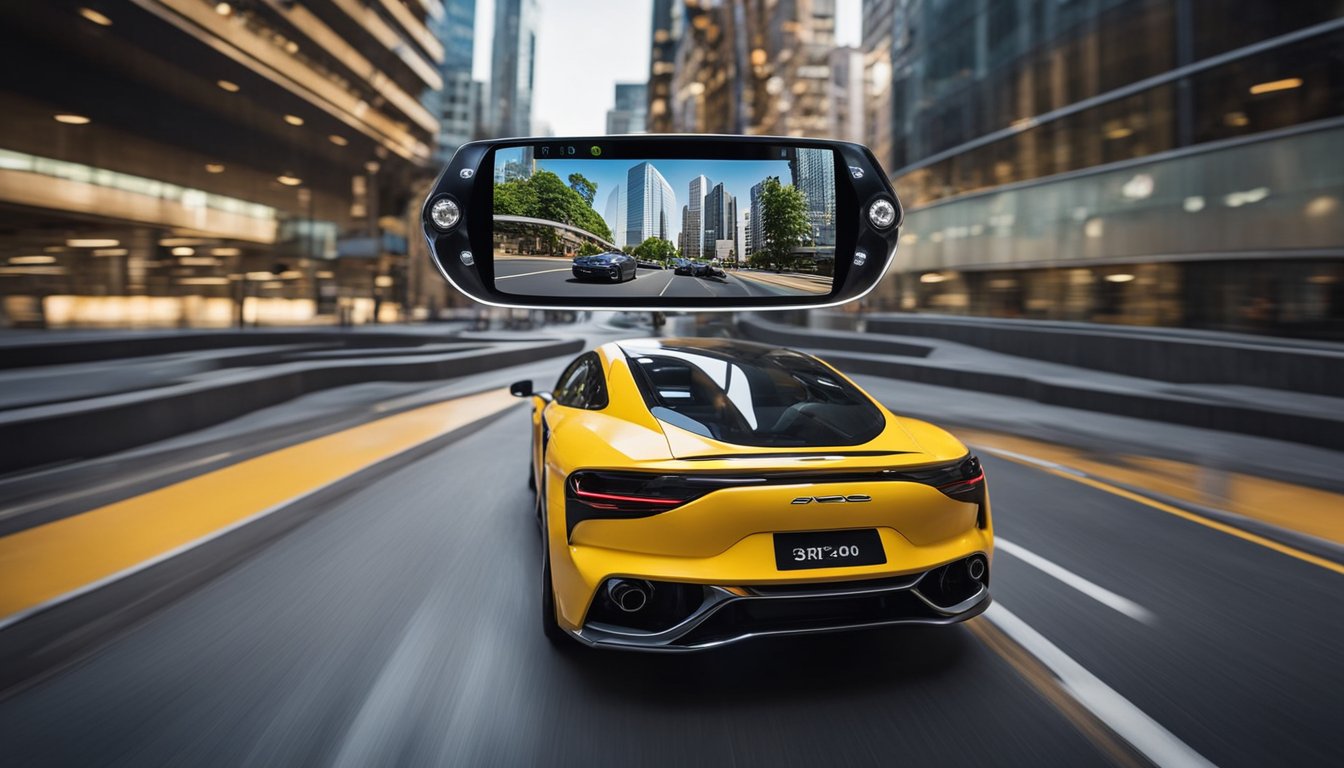
The heart of your car’s 360-degree camera system is how you view and interact with the visuals. This happens through the car’s infotainment system, which typically includes a display screen and associated controls.
Infotainment System Display
Your vehicle’s infotainment system serves as the monitor for the 360-degree camera’s output. It stitches images from multiple cameras into one continuous view that’s displayed on this screen. Often, this consolidated visual gives you the feeling of an overhead view of your car and its surroundings, providing a clear picture of any obstacles around.
Touchscreen Controls
Through touchscreen controls, you can interact with the camera system, usually included within the Human Machine Interface (HMI) of your vehicle. With intuitive gestures and taps, you can switch between various camera angles or zoom in and out for a better look. This user interface is designed to be user-friendly, reducing distractions and simplifying your safety checks while maneuvering or parking.
Benefits of Having 360-Degree Visibility
When you’re navigating through tight parking lots, a 360-degree camera brings a world of convenience to your driving experience. With this technology at your fingertips, you gain a bird’s-eye view of your vehicle’s surroundings, making maneuvers far more manageable.
-
Enhanced Awareness: Your surround-view camera system stitches together images from multiple angles, offering you a comprehensive look at what’s happening around your vehicle. This significantly increases your situational awareness.
-
Seamless Parking: Enter and exit parking spots with ease. Cameras positioned around your vehicle work in unison to create a seamless view on your display, showing even those hard-to-see areas.
-
Safety First: With this expanded visibility, you can better detect obstacles, pedestrians, and other cars, giving you precious seconds to react and enhancing overall safety.
-
Peace of Mind: Journey with the confidence that you’re less likely to encounter unexpected surprises, thanks to the improved visuals this technology provides.
Here are a few bullet points underlining the practicality of a 360-degree camera system:
- Tight Spot Navigation: Whether you’re turning in a confined space or dealing with blind corners, these cameras can be incredibly useful.
- Blind Spot Reduction: By covering all angles, blind spots are significantly reduced, letting you drive and park with greater assurance.
- Child and Pet Safety: For those moments when kids or pets might be playing around the car, the cameras can alert you to their presence, preventing accidents.
Remember, this isn’t just about parking with precision; it’s about granting you a more informed and thus safer driving experience.
Installation: Factory vs Aftermarket Systems
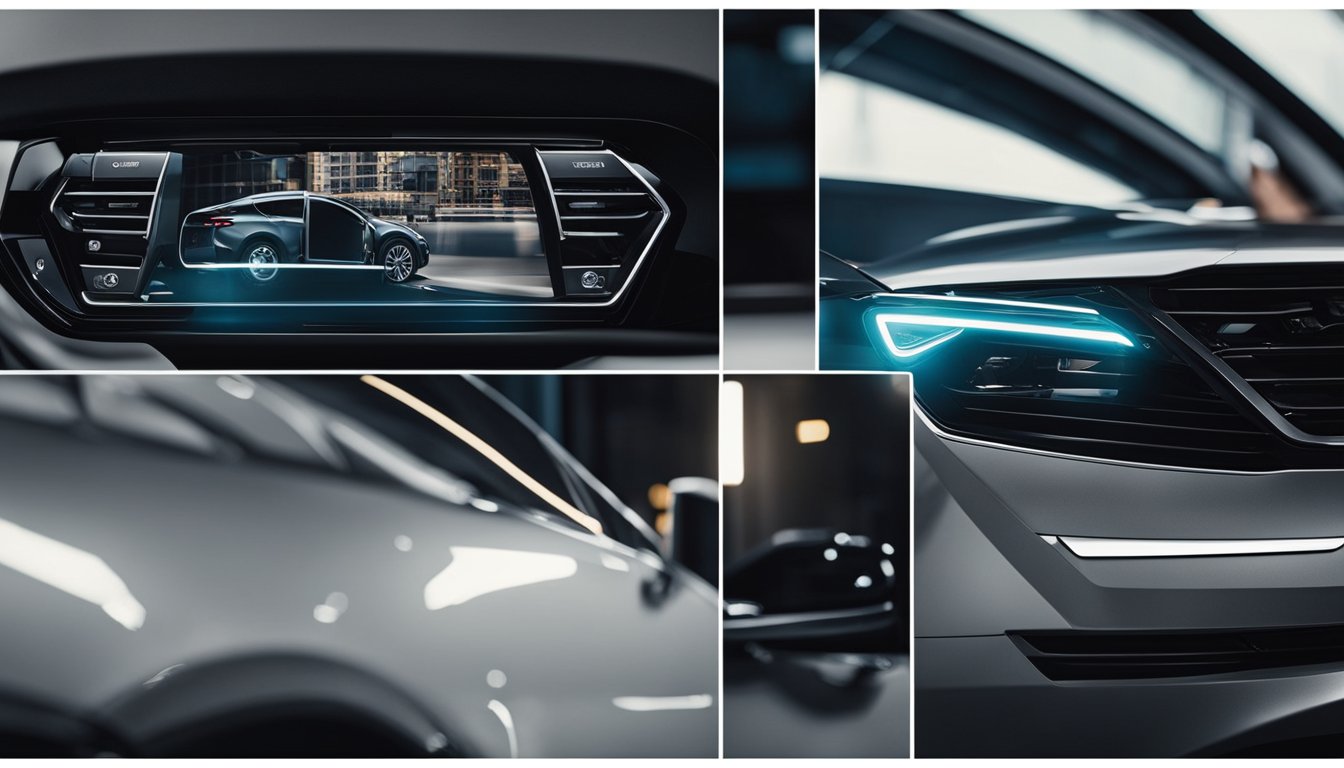
When you’re looking to enhance your vehicle’s safety features with a 360-degree view, you have the option to stick with the factory-installed (OEM) camera systems or opt for aftermarket 360-degree camera kits. The main considerations here are compatibility with your vehicle, especially if it’s a large one, the cost implications, and the range of features that come with each option. Whether it’s for navigating tight spots or just ensuring all-around visibility, let’s explore what each installation route has to offer you.
OEM Camera Integration
Factories pre-install OEM camera systems typically in new luxury brand vehicles. The integration is seamless, with the cameras usually located around your car, such as in the grille, side mirrors, and above the rear license plate. These systems are designed to work in conjunction with your vehicle’s other safety and entertainment features, offering you a cohesive experience. However, integrated OEM systems can be costlier, and if you’re looking to add a system to your used car, it might not be a feasible option.
Aftermarket 360-Degree Camera Kits
Aftermarket kits, on the other hand, provide you with the flexibility to add a 360-degree camera system to almost any vehicle, including large vehicles that may need the added visibility. These systems typically require you to install several wide-angle cameras around your vehicle. Cost-effective compared to OEM alternatives, aftermarket kits can vary in quality and features, so it’s important to choose one that offers a clear view and reliable performance. Installation can be done by a professional, or you can tackle it yourself if you’re handy and the kit comes with clear instructions.
Vehicle Makes with Integrated 360 Cameras
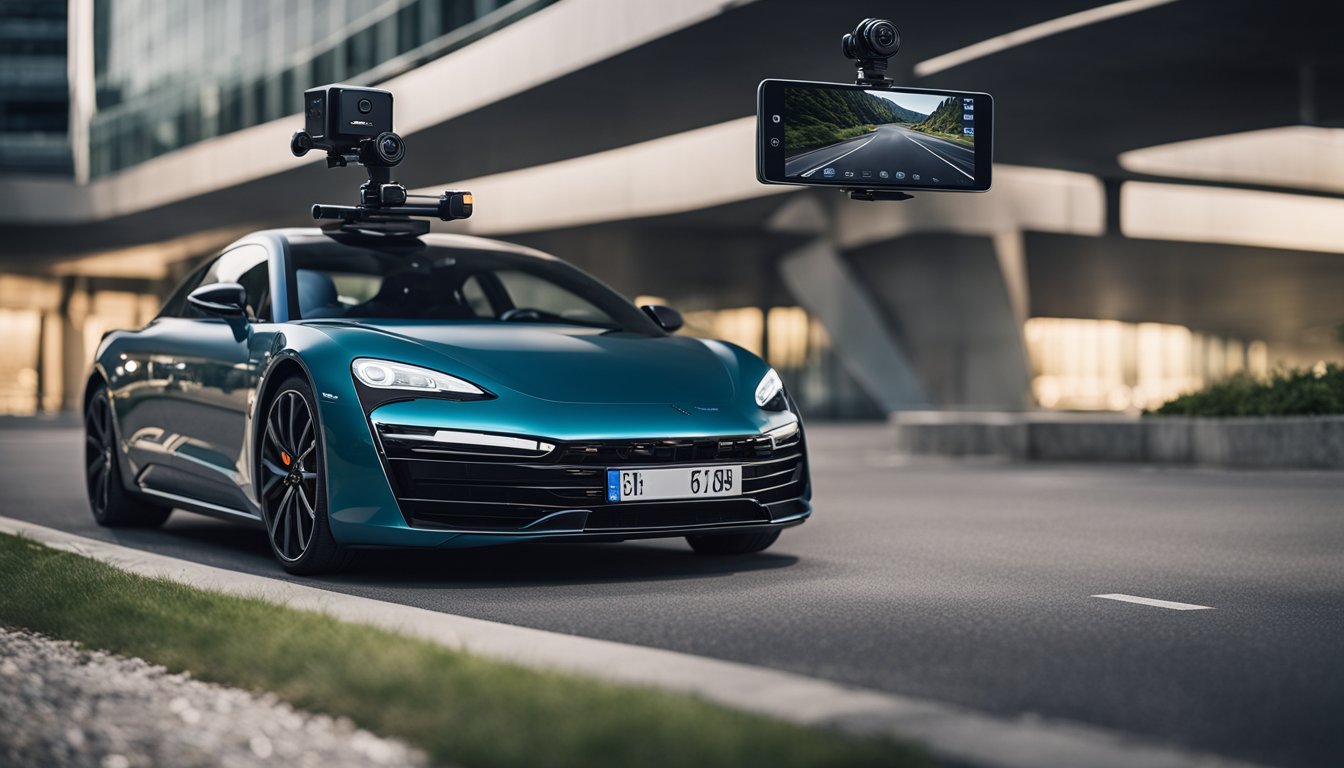
When you’re in the market for a new vehicle, a 360-degree camera can be a game-changing feature. This technology, providing a bird’s-eye view of your surroundings, is becoming increasingly common in various car makes and models. Let’s look at some manufacturers that offer this innovative system.
Luxury Brands:
For those of you with a taste for luxury, brands such as Audi, BMW, and Lexus offer 360 cameras across several models. High-end brands like Mercedes-Benz and Land Rover are also notable for incorporating this tech feature for an enhanced driving experience.
Mainstream Options:
If you’re seeking something reliable yet budget-friendly, manufacturers like Nissan and Toyota have incorporated 360 cameras in many of their models. Both Kia and Hyundai also offer this technology, giving you great value.
American Brands:
American automakers are not to be left out. Ford, Chevrolet, and Jeep provide you with 360-degree camera systems, especially in their larger SUVs and trucks where visibility is crucial.
Other Notables:
- Volkswagen and Volvo have embraced this technology, focusing on a safety-centric approach.
- For a blend of style and functionality, check out vehicles from Mazda and Infiniti.
- Chrysler, Jaguar, and Ram trucks can also be found with 360 cameras, making parking and maneuvering in tight spaces much easier.
Remember, the availability may vary based on the model and the package you choose, so it’s always a good idea to confirm the specs with your dealer. Happy car hunting!
Enhancement and Calibration for Optimal Performance
To maintain the effectiveness of your 360 car camera system, it’s crucial for you to regularly enhance the software and calibrate the hardware. This ensures that any distortion is minimized and that your system operates at peak performance.
Software Updates
Your camera system’s software is responsible for stitching together images from multiple cameras to create a cohesive 360-degree view. By keeping the software updated, you benefit from the latest algorithms that can reduce image distortion and improve the accuracy of the bird’s eye view. Most modern systems offer automatic updates, but you should check periodically to ensure your system is running the most recent version.
Hardware Maintenance
The cameras and sensors that comprise your 360 car camera system are exposed to various environmental conditions which can affect their performance. Regularly clean lenses to prevent image quality degradation. If you notice blurred or distorted images, recalibrate the cameras to correct any lens alignment issues. It’s also wise to inspect mountings and wirings periodically, fixing any loose connections that could affect the stability and functionality of your hardware.
The Impact of 360 Camera Systems on Car Security
360 camera systems, also known as surround view camera systems, significantly enhance your vehicle’s security. Here’s how they contribute to keeping your car safe:
-
Parking Lot Protection: When you park, surrounding cameras give a bird’s-eye view of your car, creating an unobstructed panorama around your vehicle. This allows you to see if anyone approaches or attempts to tamper with your car, even when you’re away.
-
Collision Avoidance: While maneuvering in tight spaces, the surround-view cameras provide real-time visuals, reducing the likelihood of low-impact accidents that often go unrecorded by traditional backup cameras.
-
Theft Deterrence: Would-be thieves are less likely to target a vehicle with visible camera systems, as 360 cameras can capture multiple angles, making it hard to approach the car unnoticed.
-
Vandalism Evidence: In case of vandalism, the system can record and provide crucial evidence. This can be critical for insurance claims and police reports.
| Benefits of 360 Camera Systems |
|---|
| 🚗 Comprehensive Coverage |
| 🎥 Real-time Monitoring |
| 🔍 Increased Visibility |
| 📍 Supports Safe Parking |
| 🕵️ Deters Potential Thieves |
| 🛡 Collects Evidence After Incidents |
By utilizing the surround view camera system, you bolster your car’s defenses, offering peace of mind when you leave your vehicle unattended. However, it’s important to remember that while these systems are advanced, they should complement, not replace, basic precautions like locking your doors and parking in well-lit areas.
In essence, these camera systems serve as an extra set of eyes, providing a broader security blanket for your vehicle in various scenarios.
Frequently Asked Questions
In this section, you’ll find concise answers to some common queries about 360-degree car cameras. Whether you’re a safety-conscious driver or an auto enthusiast, these insights can help you understand the ins and outs of this innovative technology.
What are the benefits of installing a 360-degree camera in a vehicle?
A 360-degree camera enhances your vehicle’s safety by providing a comprehensive view around the car, helping to eliminate blind spots and making parking simpler. This technology is becoming more accessible in modern vehicles.
What steps are typically involved in setting up an aftermarket bird’s eye view camera system in a car?
Setting up an aftermarket 360-degree camera system usually involves mounting cameras on all four sides of the vehicle and connecting them to a display inside. A professional installation ensures that the system is calibrated for accurate stitching of the camera feeds, providing a cohesive bird’s eye view.
What is the difference between a 360-degree camera used in cars and those used for security purposes?
360-degree cameras in cars are designed to provide a top-down view to assist with navigation and parking, while security cameras are typically used for surveillance and may offer different features like motion detection or night vision.
How do 360-degree cameras function on motorcycles compared to cars?
On motorcycles, 360-degree cameras are adapted to a more compact frame and may provide a different perspective due to the motorcycle’s size and the absence of corners. They still capture the environment around the motorcycle but may require extra considerations for mounting and aerodynamic properties.
Which features should one consider when choosing the best 360 camera for car racing or everyday driving?
Key features to consider include camera resolution, frame rate for fluidity, low-light performance, and the system’s integration with your car’s infotainment. For car racing, durability and high-speed performance are paramount.
Where are 360-degree cameras typically mounted in vehicles for optimal functionality?
The cameras are strategically placed—at the front grille, beneath the side mirrors, and on the rear of the vehicle—to give an all-encompassing view. They work together to cover blind spots, which is crucial for maneuvering in tight spaces.








